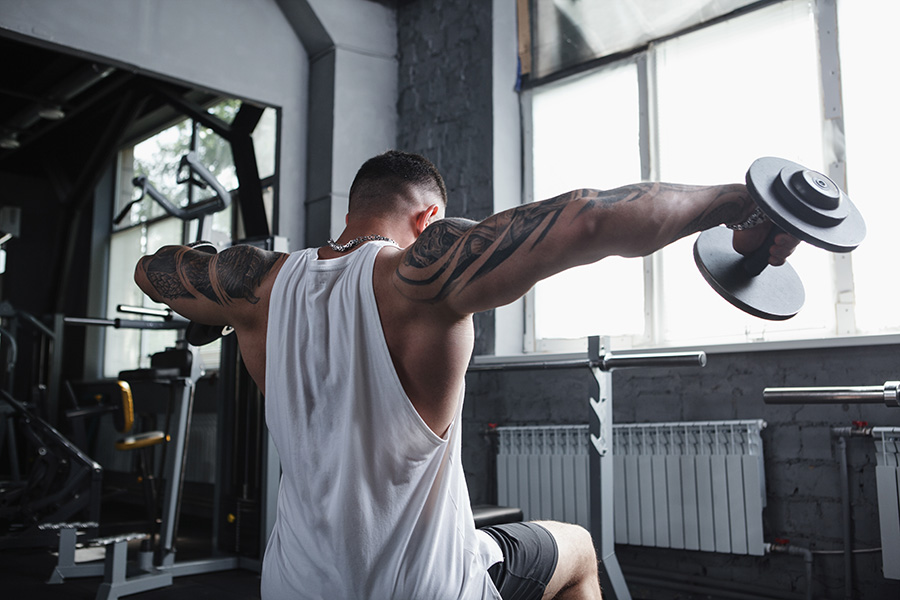Whether you’re training for strength, aesthetics, or both, a well-developed chest is key to achieving a balanced physique. Chest workouts not only enhance your upper body strength but also improve your posture. In this guide, we’ll explore the most effective chest exercises and share tips to maximize your gains.
The Anatomy of Chest Muscles
Understanding the muscles you’re working on is important for targeting them effectively. The chest consists primarily of:
- Pectoralis Major: The larger muscle responsible for chest size and strength. It is made up of:
- Clavicular Head (Upper Chest): Situated near the clavicle (collarbone).
- Sternal Head (Lower Chest): Positioned closer to the sternum (breastbone).
- Pectoralis Minor: A smaller muscle located beneath the pectoralis major that helps stabilize the shoulder blades.
Having a clear understanding of these muscles can guide you in choosing exercises that target all areas of your chest effectively.
Why Chest Workouts Matter
Chest exercises offer numerous benefits:
- Improved Strength: Chest exercises strengthen the upper body and improve pushing power, which is essential for activities like pressing and lifting.
- Muscle Growth: A well-developed chest creates a more balanced, symmetrical physique, which enhances overall body aesthetics.
- Better Posture: Strengthening the chest helps align the shoulders and upper back, contributing to improved posture.
- Boosted Performance: A strong chest enhances athletic performance in various sports such as swimming, basketball, and weightlifting.
Best Chest Exercises for Optimal Results
To build a strong, well-rounded chest, focus on both compound and isolation exercises. Below are some of the most effective chest movements to include in your routine.
Barbell Bench Press
The barbell bench press is a classic exercise that targets the chest, shoulders, and triceps, with a specific focus on the lower chest.
- How to perform it: Lie flat on a bench with your feet on the ground. Grip the barbell slightly wider than shoulder-width apart, lower it toward your chest, and push it back up until your arms are fully extended.
Dumbbell Chest Press
Dumbbell presses are a great alternative to the barbell bench press and allow for a greater range of motion.
- How to perform it: Lie on a bench with a dumbbell in each hand. Lower the dumbbells to chest level, then press them back up, ensuring your elbows stay at a 45-degree angle.
Incline Press
The incline bench press shifts the focus to the upper chest, providing a great way to add variety and dimension to your chest workout.
- How to perform it: Set the bench to a 30-45 degree angle. Press the weights upward, keeping the focus on your upper chest as you squeeze at the top.
Decline Press
Decline presses target the lower chest, offering a different angle to complement your standard pressing exercises.
- How to perform it: Lie on a decline bench with a barbell or dumbbells, then perform the pressing motion just like a regular bench press, but at a downward angle.
Push-ups
Push-ups are a timeless bodyweight exercise that engages the chest, shoulders, and triceps, making them an essential part of any chest routine.
- How to perform it: Position your hands slightly wider than shoulder-width apart and lower your body until your chest nearly touches the floor. Push back up, keeping your body straight.
Chest Flyes
Chest flyes are an isolation exercise that stretches and contracts the pectoral muscles, leading to improved muscle definition.
- How to perform it: Lie on a flat or inclined bench, holding dumbbells in both hands. With a slight bend in the elbows, lower the dumbbells out to the sides, then bring them back together in front of your chest.
Cable Chest Flyes
Using cables for chest flyes provides continuous resistance throughout the motion, allowing for a more intense muscle contraction.
- How to perform it: Stand between two cable machines with the pulleys set to chest height. Grasp the handles and bring your hands together in front of you, squeezing your chest at the peak of the movement.
Tips to Maximize Chest Workouts
To make the most of your chest workouts, here are some key tips:
Progressive Overload
To stimulate muscle growth, gradually increase the weight or the number of reps over time. Progressive overload ensures that your muscles are constantly challenged, leading to improvements in size and strength.
Form is Crucial
Prioritize good form over heavy weight. Improper technique can lead to injuries and ineffective workouts. Focus on controlled movements and full range of motion to maximize muscle activation.
Vary Your Exercises
To prevent muscle adaptation and promote continuous growth, mix up your exercises. Alternate between barbell, dumbbell, and machine exercises, and vary your angles to target all areas of the chest.
Rest and Recovery
Allow your chest muscles adequate time to recover between workouts. Overtraining can hinder progress and increase the risk of injury. Aim for at least 48 hours of rest between chest training sessions.
Nutrition for Muscle Growth
Nutrition plays a vital role in muscle development. Ensure you’re consuming enough protein to support muscle repair, along with carbohydrates and healthy fats to fuel your workouts.
Conclusion
Chest workouts are essential for building strength, improving posture, and sculpting a defined upper body. By incorporating a variety of exercises into your routine, focusing on progressive overload, and maintaining proper form, you can effectively develop your chest muscles. Combine your workouts with a well-rounded diet and proper recovery, and you’ll see significant improvements in strength and muscle definition.




